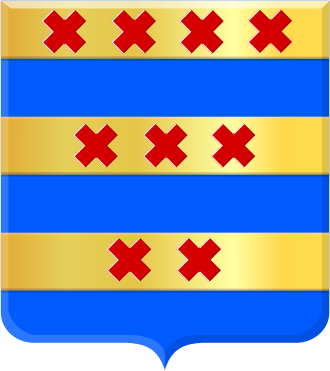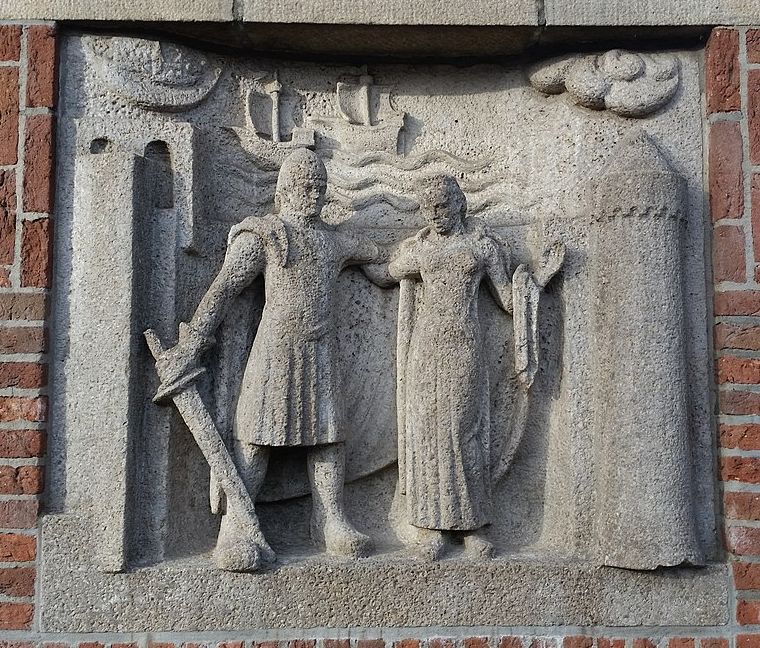The legendary history of Amsterdam (1)
On December 26 1637 the first municipal theatre – Stadsschouwburg – opened to the public. Yet another milestone in the short history of Amsterdam. By that time a rapidly developing city in the middle of its so-called Golden Age. Also a city that was desperately seeking a historical backbone. A glorious past to show off at the other – much older – European cities.
Joost van den Vondel

Joost Van Den Vondel could provide exactly that. The Cologne born playwright and poet was asked to write the opening play for the new theatre. Vondel chose the – not so heroic – story of Gijsbrecht van Amstel and turned it into an epic show. Let’s first take a look at the historical figure of Gijsbrecht van Amstel.
Divide and rule
Halfway the 1200s the city of Utrecht was the most powerful in the Netherlands. More specific the bishop of Utrecht was the most powerful bishop in the whole country. These years the bishops topped off their religious power with the Dom tower – still the country’s tallest church tower – while ruling over roughly the whole centre of the Netherlands.
The North Sea coastal region Holland, west of Utrecht, slowly grew in power. Floris V (1254-1296) as Count of Holland and Zeeland managed to expand his territory eastwards towards Utrecht. It is this Floris V who gave the ‘People living around the Dam in the Amstel’ the privilege to not pay tolls in the Holland waters in 1275.
Heeren van Amstel

Here is where the Lords of Amstel – Heeren van Amstel – take the stage. The Amstel region and the young hamlet of Amsterdam fell under the Utrecht bishop, delegated to these illustrious lords.
Especially Gijsbrecht IV van Amstel (1230-1303) tried to gain influence in the region. He played a dangerous game of divide and rule between the two neighbouring powerhouses Holland and Utrecht. Alliances, betrayals, peasant wars, treaties, years in prison. It all happened in the Amstel region in the roaring 1280s.
Gijsbrecht IV’s ambition and tragedy

Gijsbrecht IV owned several castles along the Amstel and in Utrecht. According to the legend he also had a castle built at the Amstel rivermouth. By the 1280s the Amstel family was at the peak of their power and Gijsbrecht IV started a bold war against his master, the Bishop of Utrecht. All to strengthen his position in the region. The bishop asked his rival Floris V of Holland for help, who imprisoned Gijsbrecht.
In 1290 the freed Gijsbrecht IV made the capital mistake. He kidnapped his former ally and imprisoner Floris V and unintendedly had him killed. Gijsbrecht IV was to blame and fled abroad, losing all his possessions, including the alleged Amsterdam castle.
Jan van Amstel

A lot later, in 1303, Gijsbrecht’s son Jan I van Amstel tried to benefit from the chaos that followed in Holland right after the murder. He returned to Holland and invaded Amsterdam in an attempt to reclaim his family rights. After a tumultuous siege he lost left the historical stage. Only to return more than 300 years later…
(a not so accurate reconstruction of Amsterdam in the 1300s. Just to give an idea of the size of the settlement)
Artistic liberty
On December 26, 1637 – on many levels a different time for Amsterdam – Gijsbrecht took the stage again. Now literally, in the just opened first city theatre of Amsterdam. The earlier mentioned Joost van den Vondel took the artistic liberty merging both Gijsbrecht IV and his son Jan I in one ambitious but unfortunate character. Vondel had the whole story played at the backdrop of a rich and famous city, including the glorious castle of the Amstel family. This is how the still young city gave itself a legendary history on which it could legitimate its contemporary successes.
Hotel The Dylan

Following a century old tradition the ‘Gijsbrecht van Amstel’ was played during Christmas of shortly after New Years eve. Since lately even on its historical location, now the 5 star boutique hotel The Dylan, Keizersgracht 384. After a fire in 1772 only the entrance gate remains of what once was the pride of Amsterdam.
Legacy

Why is this such an important story? Well, because of this bolt Gijsbrecht van Amstel Amsterdam is now a city in the province of (Noord) Holland and not in Utrecht. Much of the possessions of the family in Amsterdam would be taken over by the Persijn family. Also an important family. Their family crest – with the many crosses – looks a lot like the city crest of Amsterdam itself and may be derived from it.







